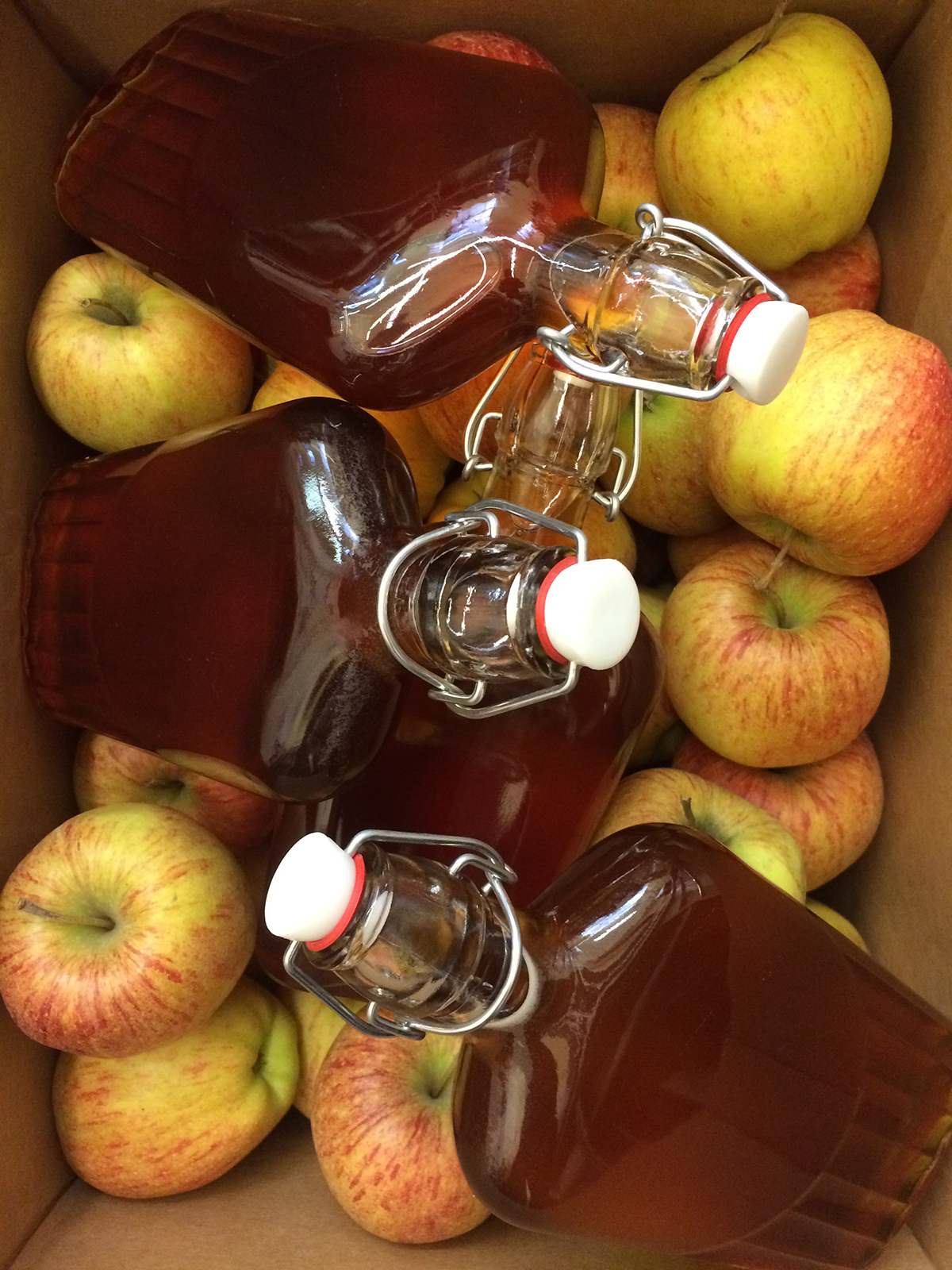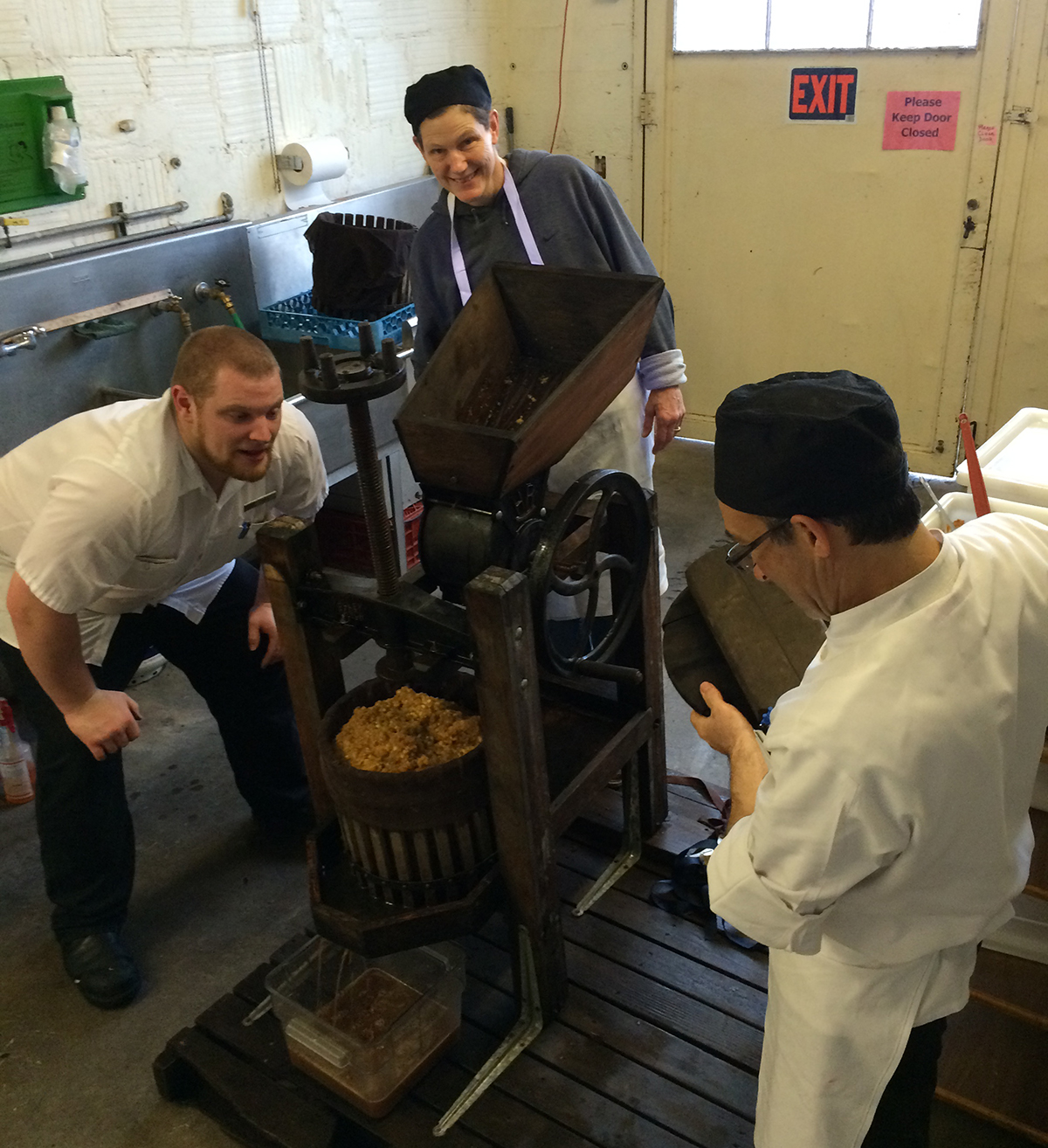Mt. Angel Abbey Goes Crackerjack for Applejack
- by Guest

Bottles of house-made applejack
When a local grape grower donated half a ton of grapes and a Farm to Fork vendor had several hundred pounds of apples he needed to get rid of, Mt. Angel Abbey Chef/Manager Paul Lieggi naturally thought about wine and applejack.
Last September, local grower Mike Rava donated a thousand pounds of Maréchal Foch grapes to the Abbey in St. Benedict, OR. Paul’s team prepared to make grape juice. But when they learned that these were actually primo wine grapes, they started thinking a little more ambitiously. Front of House Server Lynne Rice had a connection to a local wine maker, Mike Cramer, so they visited him while his company was processing wine and were inspired to go for it. There are now about 60 gallons of “pretty darn good” wine brewing in the Abbey’s cellar, which will be used for special events and cooking.
After the successful wine experiment, Mike and Paul were talking whiskey. He explained the process of making hard cider and applejack whiskey by freeze distillation. Applejack is a liquor largely forgotten in the modern world. It was introduced by Robert Laird more than two centuries ago. Supposedly George Washington requested the Laird Family recipe for his troops, and America’s first mixed drink, the Stone Wall, was two parts hard cider and one part applejack.

Storeroom Manager Mike Wilson, FOH Server Lynne Rice, and Chef/Manager Paul Lieggi pressing apples
The next day, Paul contacted Sam Asai from Ace High Hood River, the Farm to Fork apple grower, about juicing apples. Lynne, Paul, and Storeroom Manager Mike Wilson began processing several hundred pounds of apples using an oldfashioned apple press. They had fun while learning a lot about apple pressing.
After pressing and straining the fresh, pure juice, every interested staff member stood around and drank the sweet, golden liquid. The monks and students loved the chilled pitchers of fresh cider as well.
Then, the process of making hard cider and applejack whiskey began. Six gallons of raw cider were set aside. One was mixed with sugar, heated and cooled, had fermenting agents added to it, and then combined with the remaining cider. Once poured into a glass carboy with a bubbler plug, it fermented at a consistent temperature of 64 to 70 degrees for about 12 days. Everything must always remain clean and sterile during the process or the golden juice would sour. After fermentation was complete, Paul siphoned out the juice into jugs without disturbing the sediment. The hard cider was chilled to clarify even further. For three of the five gallons, they tried freeze distillation.
Paul and his team have used the apple cider in baked apples for composed salads, on pork chops, and in hard-cider salad dressing. They are looking forward to the planned applejack crème brûlée, as well as pure vanilla–applejack swirl ice cream.
Submitted by Paul Lieggi, Chef/Manager